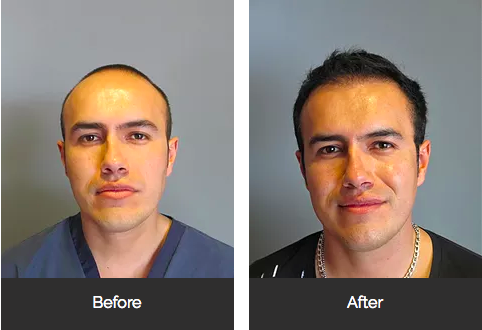How Long Does a Hair Transplant Last?
- contact26153
- Sep 6, 2018
- 3 min read

Male pattern baldness, or androgenetic alopecia, is an irreversible condition that is inherited at birth. Fortunately, there are a few solutions that provide a permanent solution, such as Hair Restoration. This is a type of surgery that moves hair from one area on the body to another area with little to no hair. Let's take a closer look at hair restoration surgery, what options are available to patients, and who is the perfect candidate.
What Causes Hair Loss?
Before we dive into the technical aspect, let's talk about how and why we lose our hair. The average person will lose roughly 100 hairs a day but shouldn't be noticeable as new hairs are growing all the time. However, when there is a break in the cycle, your hair begins to thin noticeably. This is called androgenetic alopecia.
Androgenic alopecia is the technical term for male-pattern baldness and is an irreversible condition inherited at birth. Hair loss is governed by a hormone called dihydrotestosterone (DHT). Usually, hair grows and then remains in a resting phase. This process can take 2 to 6 years and only starts over when the hair falls out naturally. When your hair is exposed to Dihydrotestosterone (DHT) or other androgens, it spends more time resting than growing.
Permanent Solutions for Hair Loss
Technology isn't limited to our devices. It transcends all aspects of the world we live in including hair restoration. Hair restoration surgery is the only permanent solution for hair loss, and there are two options available:
FUT - Follicular Unit Transplant uses larger strips of skin and hair to cover more significant bald spots including the crown area. This is ideal for those who need to cover large areas of hair loss.
FUE - Follicular Unit Extraction, or FUE, is a technique which involves extracting individual hair from donor areas and using it to restore hair in balding spots. The process is relatively tedious and time-consuming.
What to Expect from Hair Transplantation Surgery
Regardless of the procedure you use, it’s quite common for individuals to experience mild shedding after the surgery. But don’t be alarmed, this won't undo all of your doctor's hard work! This is just a normal reaction to the trauma your scalp has just been through. Therefore, it is essential to ensure proper healing at this stage to receive maximum benefits. It is also common to require a second procedure after your first one is completed. Your doctor might recommend a follow-up procedure to help eliminate any additional bald spots, but this won't be necessary until months after your initial surgery.
Who is the Perfect Candidate for Hair Transplantation Surgery?
This procedure is best for someone who has been balding for a while. Hair transplantation is best approached after 5+ years of balding. Waiting a substantial amount of time will give your doctor a better understanding of your hair loss pattern. This will allow your doctor to tailor a plan, making sure you get the results you want.
You have realistic expectations:
Patience is critical in this process, and if you are willing to wait, the reward will be a natural, healthy head of hair. Hair transplantation results take time to settle and grow. Usually, after the procedure takes place, the transplanted hairs fall back out again. They do grow back, but sometimes it can take months before you will be able to style, dye, and cut your hair like normal.
The before and after pictures below illustrate the amazing results you can enjoy in just a year's time.
Do you have more questions about hair transplantation? Call Nashville Hair Clinic at 615-635-0892 to book a consultation. Our team of experts can answer all of your questions and help you determine the perfect treatment plan.














Comments